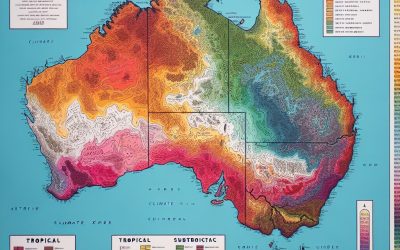Explore the World Through Geography, Natural Resources & Daily History
Clear, reliable and engaging guides that help you understand our planet — from UK geography education to global natural resources and On This Day history events.
Explore, discover, and learn about the wonders of our world! At Earth Site, we’re passionate about bringing geography, history, and science to life for curious minds of all ages. Whether you’re delving into historical events, uncovering the mysteries of the natural world, or seeking interactive resources, you’re in the right place.
Here, you can uncover the stories behind historical events, explore the natural wonders of our planet, and gain valuable insights into how the Earth’s systems shape our daily lives. From the towering peaks of mountain ranges to the far-reaching impacts of human innovation, we aim to make every topic both engaging and informative.
Start your journey of discovery with us today, and let’s make learning an adventure!
What We Cover
Earth Site brings together engaging and accessible educational content designed to help you understand the world, its history, and its natural systems.
🌍 Geography Education (UK & Worldwide)
We publish clear, easy-to-understand geography resources for students, teachers and curious learners. Our guides support geography education in the UK and cover physical geography, climate, ecosystems, population, and global development.
⛏️ Natural Resources & Environmental Geography
Explore detailed country profiles covering natural resources, mining, energy, geology and global environmental challenges. We show how nations manage minerals, water, land and ecosystems, and why these resources matter.
📅 On This Day in History
Every day has a story. Our On This Day history series features major events, anniversaries, traditions, and cultural milestones from around the world — with timelines, context, and fun facts.
TIMELINE
Cultural or Historical Sites Of Australia: Important Cultural Landmarks or Historical Sites In Australia
Australia is a country known for its rich cultural and natural heritage. From iconic landmarks to ancient sites, Australia offers a diverse range of attractions that showcase its unique history and beauty. These sites are not only important for preserving the country’s past, but also for promoting tourism and contributing to the economy. In this article, we will explore some of Australia’s most significant cultural and natural sites, including the Sydney Opera House, Uluru-Kata Tjuta National Park, the Great Barrier Reef, the Royal Botanic Garden, the Port Arthur Historic Site, the National Gallery of Victoria, the Australian War Memorial, the Old Melbourne Gaol, the National Museum of Australia, and the Daintree Rainforest. Summary The Sydney Opera House is a world-renowned cultural icon of Australia. Uluru-Kata Tjuta National Park is a sacred site of Aboriginal culture and spirituality. The Great Barrier Reef is a natural wonder and historical site with a rich marine biodiversity. The Royal Botanic Garden is a historical landmark of Sydney with a diverse collection of plants. The Port Arthur Historic Site is a symbol of Australia’s convict past and a popular tourist destination. The Sydney Opera House: A Cultural Icon of Australia The Sydney Opera House is perhaps one of the most recognizable landmarks in Australia. Designed by Danish architect Jørn Utzon, it was officially opened in 1973 and has since become a symbol of Australian culture and creativity. The Opera House is not only renowned for its architectural design but also for the wide range of cultural events and performances it hosts. The design of the Sydney Opera House is characterized by its distinctive...
Australia’s Major Natural Resources: Exploring Mineral Resources, Mines, and Economic Power
Australia’s Major Natural Resources: Exploring Mineral Resources, Mines, and Economic Power Australia is a land rich in opportunity, quite literally. From the dusty plains of Western Australia to the rugged terrain of South Australia, the nation is blessed with a wealth of natural resources. It stands tall on the global stage as a leading exporter of mineral resources, boasting world-class mines, massive iron ore deposits, and abundant natural gas reserves. This blog post is a deep dive into Australia’s natural resource landscape—exploring its vast mineral wealth, the dynamics of its powerful mining industry, and how these resources shape the Australian economy. Whether you’re a student, researcher, investor, or simply curious about Australian mining, this article offers valuable insights into one of the world’s richest lands beneath the soil. Article Outline What Makes Australia Rich in Natural Resources? How Important is Iron Ore to the Australian Economy? Where Are the Major Uranium Deposits in Australia? What Role Does Natural Gas Play in Australia’s Energy Mix? Exploring Australia’s Copper and Zinc Reserves Why is Bauxite Crucial to Australia’s Mining Sector? How Valuable Are Australia’s Mineral Sands? The Role of Queensland and New South Wales in Mining What Is the Status of Nickel and Lithium Mining in Australia? What Are the Environmental and Economic Challenges Facing the Mining Industry? 1. What Makes Australia Rich in Natural Resources? Australia’s natural resources are the result of millions of years of geological processes that created rich mineral deposits across the continent. This includes a wide variety of metal ores, energy resources, and industrial minerals. From iron ore to natural gas, bauxite to uranium, the country...
Rounding Numbers
Rounding numbers is a fundamental mathematical concept that is used in everyday life. It involves approximating a number to a certain degree of accuracy. This is done by replacing the number with another number that is easier to work with or understand. Rounding numbers is important because it allows us to simplify calculations, estimate quantities, and communicate information more effectively. In everyday life, rounding numbers is used in various situations. For example, when shopping, we often round prices to the nearest dollar or pound to get an estimate of how much we will be spending. When cooking, we may round measurements to the nearest teaspoon or tablespoon for convenience. Rounding numbers is also used in financial transactions, such as when calculating interest rates or determining the total cost of a purchase. Summary Rounding numbers is a common practice in mathematics and everyday life. The basics of rounding involve identifying the place value to round to and determining whether to round up or down. To round to the nearest whole number, look at the digit in the ones place and round up if it is 5 or greater. Rounding to the nearest tenth involves looking at the digit in the tenths place and rounding up if it is 5 or greater. Rounding to the nearest hundredth involves looking at the digit in the hundredths place and rounding up if it is 5 or greater. The Basics of Rounding Numbers Rounding is the process of approximating a number to a specified degree of accuracy. The degree of accuracy is determined by the number of significant digits in the original number. Significant...
Political Boundaries Of Australia: Provinces, Districts, or Historical Boundaries.
Australia is a vast and diverse country, with a complex system of political boundaries that play a crucial role in its governance. Understanding these boundaries is essential for comprehending the political landscape of the country and how power is distributed among its various regions. This article will provide a comprehensive overview of political boundaries in Australia, including the provinces and districts that make up its governance structure. By delving into the historical evolution of these boundaries and examining their impact on modern-day Australia, we can gain a deeper understanding of the challenges and prospects for political boundaries in the country. Summary Australia is divided into six states and two territories, each with their own political boundaries. The provinces of Australia are further divided into districts, which play a significant role in local governance. The historical evolution of Australia’s political boundaries has been shaped by colonialism, federation, and Indigenous sovereignty. Political boundaries in Australia play a crucial role in the distribution of power and resources, and can impact social and economic outcomes. Maintaining political boundaries in Australia can be challenging due to factors such as population growth and changing community needs. Provinces of Australia: A Brief Overview Provinces, also known as states or territories, are the primary political divisions in Australia. There are six states – New South Wales, Queensland, South Australia, Tasmania, Victoria, and Western Australia – and two mainland territories – the Australian Capital Territory (ACT) and the Northern Territory. Each province has its own government and is responsible for various aspects of governance within its jurisdiction. New South Wales is the oldest and most populous state in...
Decimals
Decimals are a fundamental part of mathematics and play a crucial role in our everyday lives. They are a way of representing numbers that fall between whole numbers, allowing for more precise measurements and calculations. In simple terms, decimals are numbers that include a decimal point, which separates the whole number part from the fractional part. The importance of decimals in everyday life cannot be overstated. From measuring ingredients in a recipe to calculating distances on a map, decimals are used in a wide range of practical applications. They allow us to express quantities that are not whole numbers, such as money, time, and measurements. Without decimals, our ability to make accurate calculations and comparisons would be severely limited. Decimal notation follows a place value system, similar to whole numbers. Each digit in a decimal number has a specific value based on its position relative to the decimal point. The digit immediately to the left of the decimal point represents the ones place, while the digit to the right represents tenths. The further right you go from the decimal point, the smaller the place value becomes (hundredths, thousandths, etc.). This place value system allows us to easily understand and work with decimal numbers. Summary Decimals are a way of representing numbers that fall between whole numbers. Decimal places refer to the number of digits after the decimal point. Decimal operations include addition, subtraction, multiplication, and division. Converting decimals to fractions involves simplifying and reducing the fraction. Comparing decimals involves determining whether one decimal is greater than, less than, or equal to another decimal. Rounding decimals involves approximating the decimal...
Climate Zones Of Australia: Different Climate Regions Of Australia
Australia is a vast and diverse country, known for its unique wildlife, stunning landscapes, and extreme weather conditions. The country is home to a wide range of climate zones, each with its own distinct characteristics and weather patterns. Understanding these climate zones is crucial for various reasons, including agriculture, tourism, and environmental conservation. Summary Australia has eight climate zones, each with unique features and characteristics. The tropical climate zone in Australia is characterized by high temperatures, high humidity, and heavy rainfall. The subtropical climate zone in Australia experiences mild winters and hot summers, with occasional droughts and bushfires. The Mediterranean climate zone in Australia is known for its mild, wet winters and hot, dry summers, and is home to unique vegetation such as eucalyptus forests. The desert climate zone in Australia covers a large portion of the country and is characterized by low rainfall, high temperatures, and unique flora and fauna adapted to the harsh conditions. Tropical Climate Zone in Australia: Features and Characteristics The tropical climate zone in Australia is located in the northern part of the country, covering areas such as Queensland and the Northern Territory. This region experiences high temperatures and humidity throughout the year, with distinct wet and dry seasons. The wet season, also known as the monsoon season, brings heavy rainfall and occasional cyclones. The vegetation in the tropical climate zone is lush and diverse, with rainforests being a prominent feature. The wildlife in this region is also unique, with species such as kangaroos, wallabies, and various bird species being commonly found. Subtropical Climate Zone in Australia: Climate and Weather Patterns The subtropical climate...
Roman Numerals
Roman numerals are a numerical system that originated in ancient Rome and were used throughout the Roman Empire. The system is based on a combination of letters from the Latin alphabet to represent numbers. The use of Roman numerals dates back to around the 7th century BC, and they were widely used until the 14th century AD. The evolution of Roman numerals over time is quite fascinating. Originally, the system only consisted of six symbols: I, V, X, L, C, and M, which represented the numbers 1, 5, 10, 50, 100, and 1000 respectively. However, as the need for larger numbers arose, additional symbols were introduced. For example, a bar placed above a numeral multiplied its value by 1000. Over time, the system became more complex and intricate. Summary Roman numerals were developed in ancient Rome and were used for counting and record-keeping. Roman numerals use a combination of letters to represent numbers, with each letter having a specific value. To convert Roman numerals to Arabic numerals, you need to add up the values of each letter in the Roman numeral. To convert Arabic numerals to Roman numerals, you need to break down the number into its component parts and then use the appropriate letters to represent each part. While Roman numerals are still used in some contexts, they can be difficult to read and understand, and are not as widely used as Arabic numerals. Understanding the Basic Principles of Roman Numerals In order to understand Roman numerals, it is important to familiarize oneself with the symbols used and their corresponding values. The basic symbols are as follows: –...
Terrain and Topography Of Australia: Mountains, Valleys, and Plains in Australia.
Australia is a vast and diverse country, known for its unique and varied terrain. From the rugged mountains of the Great Dividing Range to the barren wilderness of the Nullarbor Plain, Australia‘s geography plays a crucial role in shaping its climate, environment, and culture. Understanding the terrain and topography of Australia is essential for various purposes, including tourism, agriculture, and environmental management. Summary Australia’s terrain is diverse and dynamic, with a range of landscapes from mountains to deserts to coastal plains. The Great Dividing Range is the longest mountain range in Australia, stretching over 3,500 km. The Australian Alps are the highest mountains in Australia, with Mount Kosciuszko reaching 2,228 metres. The Western Plateau is a vast and arid landscape, covering over two-thirds of the country. The Murray-Darling Basin is Australia’s most important agricultural region, producing over one-third of the country’s food. The Great Dividing Range: Australia’s Longest Mountain Range The Great Dividing Range is a significant geographical feature that stretches over 3,500 kilometers along the eastern coast of Australia. It is the longest mountain range in the country and plays a crucial role in shaping Australia’s geography and climate. The range acts as a natural barrier, separating the coastal regions from the inland areas. It influences rainfall patterns, with the eastern side receiving more rainfall than the western side. The Great Dividing Range is home to several popular tourist destinations. The Blue Mountains, located just outside of Sydney, offer stunning views, deep valleys, and ancient rock formations. The Snowy Mountains, located in New South Wales and Victoria, are a popular destination for skiing and snowboarding during the winter...
Negative Numbers
Negative numbers are a fundamental concept in mathematics that represent values less than zero. They are denoted by a minus sign (-) placed before the number. The concept of negative numbers has been around for thousands of years and has evolved over time. The earliest known use of negative numbers can be traced back to ancient civilizations such as the Babylonians and the Chinese. However, negative numbers were not widely accepted or understood until the 17th century. The Italian mathematician, Girolamo Cardano, is credited with introducing the concept of negative numbers in his book “Ars Magna” published in 1545. Summary Negative numbers are numbers less than zero and are represented with a minus sign (-). Understanding negative numbers is important in mathematics and science as they are used to represent values such as temperature, altitude, and debt. Negative numbers have real-life applications in finance, weather forecasting, and physics. When adding or subtracting negative numbers, the signs must be taken into account and the larger absolute value is subtracted from the smaller absolute value. When multiplying or dividing negative numbers, the product or quotient is positive if there are an even number of negative factors and negative if there are an odd number of negative factors. Understanding the Concept of Negative Numbers To understand negative numbers, it is helpful to visualize them on a number line. A number line is a straight line that represents all real numbers, with zero in the middle and positive numbers to the right and negative numbers to the left. The absolute value of a number is its distance from zero on the number line....
Population Density Of Australia
CC BY 4.0 License ABS Digital Atlas of Australia Australia, known for its vast landscapes and unique wildlife, is also home to a relatively small population compared to its land size. With a population of approximately 26 million people, Australia has a population density of around 3 people per square kilometre. This low population density is due to the country’s large land area, which spans over 7.6 million square kilometres. Despite this, studying population density in Australia is of great importance as it provides insights into various social, economic, and environmental issues that affect the country. Summary Australia has a relatively low population density compared to other developed countries. Population density is the number of people living in a given area, and it has significant social, economic, and environmental implications. Factors affecting population density in Australia include geography, climate, infrastructure, and economic opportunities. Population density varies greatly across different regions of Australia, with major cities having much higher densities than rural areas. Urbanisation and rural-urban migration are major drivers of population density shifts in Australia, with implications for housing, transportation, and social services. Understanding Population Density and Its Significance Population density refers to the number of individuals living in a specific area, usually measured in terms of people per square kilometre. It is an important metric for understanding the distribution of people within a country or region. By studying population density, researchers and policymakers can gain insights into various social, economic, and environmental issues. From a social perspective, population density can provide insights into the availability and accessibility of social services such as healthcare, education, and transportation. Higher...
The Remarkable Properties of Osmium: Uncovering the Lesser-Known Element of the Periodic Table
Osmium, a chemical element with the symbol Os and atomic number 76, is often overlooked in discussions about the periodic table. It is a transition metal that belongs to the platinum group, which also includes elements such as platinum, palladium, and iridium. Osmium was discovered in 1803 by English chemist Smithson Tennant and named after the Greek word “osme,” meaning “smell,” due to its strong odor when it reacts with air. Osmium is a dense and hard metal, with a density of 22.59 grams per cubic centimeter, making it the densest naturally occurring element. It is also one of the hardest substances known to man, with a hardness of 7.0 on the Mohs scale, surpassing even diamond. These physical properties make osmium highly valuable in various industries, including technology and medicine. Summary Osmium is an unsung hero of the periodic table, with unique physical and chemical properties. It is denser than lead and harder than diamond, making it useful in a variety of applications. Osmium is reactive and versatile, with potential as a cancer treatment and antibacterial agent. Its presence in supernovae and neutron star mergers makes it important in astronomy. Osmium research is advancing in nanotechnology and energy storage, with potential for future breakthroughs. The Physical Properties of Osmium: Denser than Lead and Harder than Diamond Osmium’s physical properties set it apart from other elements on the periodic table. As mentioned earlier, osmium is the densest naturally occurring element, with a density that exceeds that of lead. This high density makes osmium ideal for use in weights and measures, as well as in electrical contacts where high density...
Ordering Numbers
Understanding how to order numbers is a fundamental skill in mathematics. Whether it’s arranging a list of numbers in ascending or descending order, comparing numbers using greater than and less than symbols, or ordering fractions and decimals, the ability to order numbers is essential for solving mathematical problems. In this blog post, we will explore the basics of ordering numbers, including the use of symbols, the importance of place value, strategies for ordering large numbers, and real-life applications of ordering numbers in mathematics. Summary Understanding the basics of ordering numbers is essential in mathematics. The greater than and less than symbols are used to compare numbers. Arranging numbers in ascending and descending order helps in data analysis. Place value is crucial when ordering numbers, especially with large digits. Tips for ordering large numbers include breaking them down into smaller parts. Understanding the basics of ordering numbers Ordering numbers refers to arranging a list of numbers in a specific sequence. This sequence can be either ascending or descending order. In ascending order, the numbers are arranged from smallest to largest, while in descending order, the numbers are arranged from largest to smallest. For example, let’s consider the following list of numbers: 5, 2, 8, 1, 7. To arrange these numbers in ascending order, we start with the smallest number and continue in increasing order. The ascending order of these numbers would be: 1, 2, 5, 7, 8. On the other hand, to arrange these numbers in descending order, we start with the largest number and continue in decreasing order. The descending order of these numbers would be: 8, 7,...











